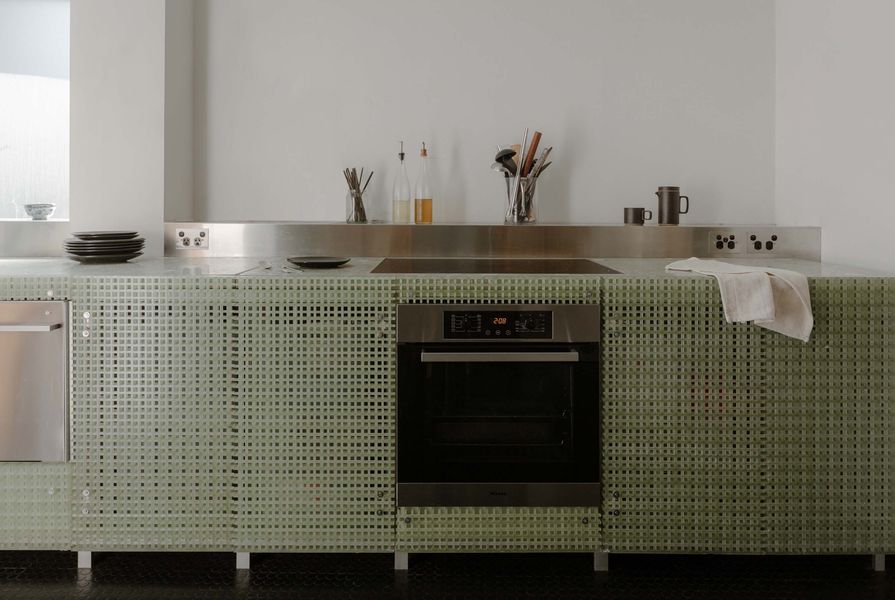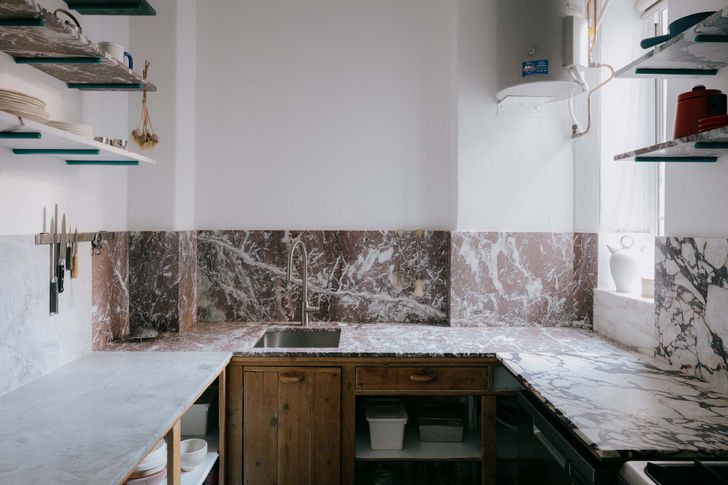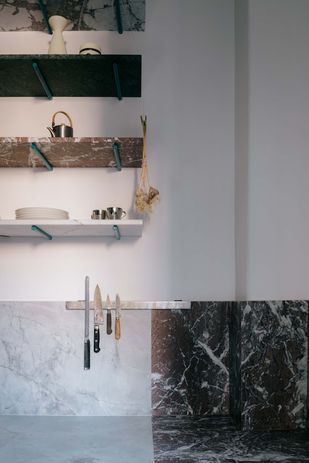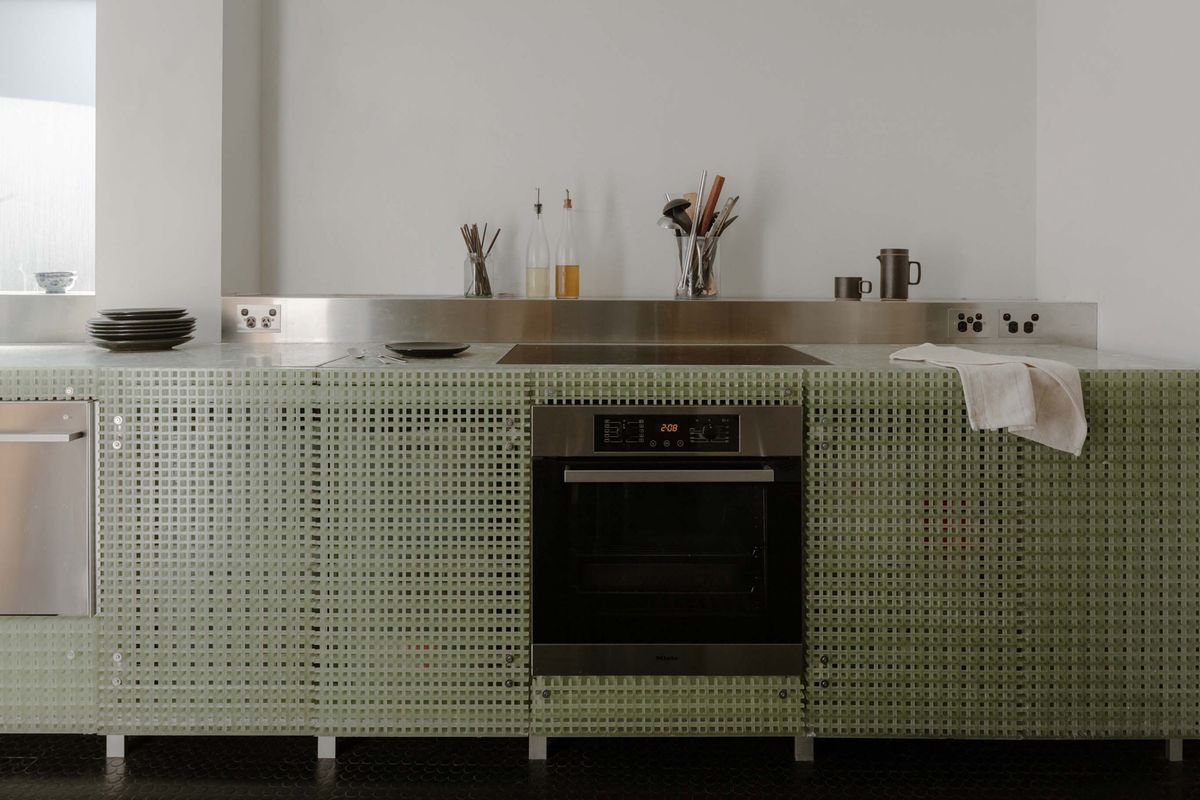Second Edition: this studio’s name really speaks for itself. For founders Shahar Cohen and Amy Seo, finding a new life for materials or appliances that were set for landfill is the core of their practice and research. But Second Edition’s work is about much more than turning trash into treasure; it’s about demonstrating that the act of reuse in design and construction can be economically viable.
Proving the financial feasibility of material reuse was the catalyst for the creation of Second Edition. What began as a research thesis at the University of Technology Sydney quickly evolved into a business when Shahar and Amy partnered with Bill Clifton, whose role as director at Robert Plumb Collective secures Second Edition with continuous access to construction and demolition sites. From here, the studio continues its research and experimentation. “Seeing how a material can or can’t bend, how it can be cut or what sizes it comes in at the beginning is really interesting to us, because through that exposure you learn how to design with materials more efficiently,” Shahar says.
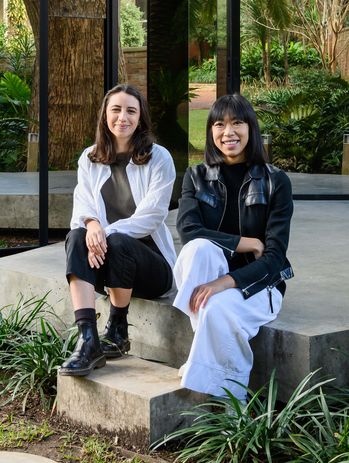
Shahar Cohen (left) and Amy Seo advocate for deconstruction over demolition.
Image: Michael Wee
Their work is very local – necessarily so, because they rely on direct access to construction sites – but there is potential for these processes to be replicated across Australia. One of Second Edition’s main ambitions is to centralize information held by a variety of experts who refurbish, maintain or specialize in specific materials, and position themselves as a reuse resource. “We’re not interested in keeping the information to ourselves … the more people that are [working with reuse], the better,” Shahar shares. And they’re not wrong: reuse strategies can have a significant positive impact on the environment by reducing our reliance on new materials.
In 2023, the Intergovernmental Panel on Climate Change released a report stating that it’s “unequivocal” that climate is changing as a result of human activity. The construction industry is a significant waste generator. In Australia, during the 2020–21 financial period, the country generated 25.2 megatonnes of building and demolition waste – that’s 25.2 megatonnes that could have been redirected for reuse. There are complications when it comes to deconstructing built fabric for reuse – perceived impact to costs and timeframes high among them – but working through these “setbacks” is a challenge that Second Edition has embraced. “We are currently consulting on bigger projects, which has become an exercise in the sourcing and procurement of reuse materials. We are investigating how to implement reuse in a traditional architectural tender process, where we need to provide information for the builder to quote and build from,” explains Amy.
Most of the existing kitchen in this Potts Point apartment was preserved and repaired, and the benchtop and shelves constructed using marble offcuts.
Image: Hamish McIntosh
Second Edition’s projects are great examples of the physical and ideological beauty of material salvage. “Our design projects [have been] the best way to showcase what’s possible with salvaged or second-hand material.” Take their project Potts Point (2022), a small kitchen refurbishment in Sydney. Amy and Shahar retained the solid timber framing of the old kitchen and updated it resourcefully, avoiding new carcasses, unnecessary materials and even door fronts. Knowing the measurements of stone they needed for the design, the pair located a series of small marble slabs languishing in the yard of a local stone supplier and decided to use them for the benchtop. “We actually didn’t know at the start of the project that we were going to use a bunch of different types of marble … [it was] purely out of availability,” Amy explains. The end result is a refurbished kitchen with a higher standard of efficiency, a fresh “new” look and, most importantly, a minimal carbon footprint.
Through their work, Second Edition demonstrates the reuse potential of second-hand, discarded and demolition materials.
Image: Hamish McIntosh
When asked what the future looks like for Second Edition, Shahar and Amy agree on continuing the studio’s original intent to make the use of second-hand or demolition materials more accessible and viable for clients and, in particular, architects. They hope to have more people in the studio, each with their own expertise – whether that be in smaller-scale deconstruction, material prototyping or appliance refurbishment – to help disseminate knowledge more widely. “We want to be a node in the distribution of information about deconstruction use. That’s kind of how Second Edition manifests itself,” Amy says.
Along with continued research on site, in the workshop and online (Shahar and Amy are big fans of Facebook Marketplace and Gumtree), the studio is working on small retail fitouts and on bigger commercial projects as consultants. Both scales and roles feed into the original purpose and ethos of the studio. “We’re still in the research phase and we’ll probably always be in a research phase … it’s a big part of how we want it to continue,” says Amy. With the built environment industry slowly embracing models for a circular economy, and given Shahar and Amy’s generosity with their knowledge, Second Edition will no doubt play a part in championing repair and reuse. From that perspective, the future looks renewed and bright.
Source
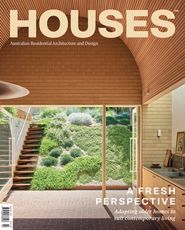
People
Published online: 25 May 2023
Words:
Georgia Birks
Images:
Hamish McIntosh
Issue
Houses, June 2023

